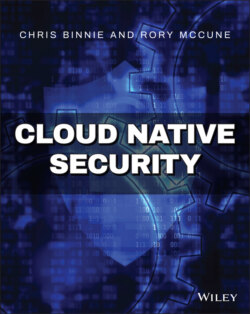Читать книгу Cloud Native Security - Chris Binnie - Страница 9
Meeting the Challenge
ОглавлениеThe authors of Cloud Native Security have both worked in the technology and security space for more than 20 years and approach such challenges from different perspectives. For that reason, this book is divided into four distinct sections that together will arm the reader with enough security tooling knowledge, coupled with niche know-how, to improve the security posture of any Cloud Native infrastructure.
The key areas explored in detail within this book are the high-level building blocks already mentioned in the introduction. Part I focuses on container runtime and orchestrator security, Part II on DevSecOps tooling, Part III on the securing and monitoring cloud platforms, and finally Part IV looks at advanced Kubernetes security.
There is ostensibly less Linux hardening information in this book than the other facets because Linux is more mature than the other components in a Cloud Native stack, fast approaching its 30th birthday. However, it would be unfair not to mention that almost every component involved with Cloud Native technologies starts with Linux in one shape or form. It is an often-overlooked cornerstone of security in this space. For that reason, a chapter is dedicated to ensuring that the very best advice, based on industry-consensus, is employed when it comes to using automation to harden Linux.
Today's popular cloud platforms are unquestionably each different, but the security skills required to harden them can be transposed from one to another with a little patience. Amazon Web Services (AWS) is still the dominant cloud provider, so this book focuses on AWS; readers working on other cloud platforms, however, will find enough context to work with them in a similar manner. From a Linux perspective, the hands-on examples use Debian derivatives, but equally other Linux distributions will match closely to the examples shown.
Coverage of container security issues often incorrectly focuses solely only on static container image analysis; however, within this book readers will find that the information relating to container runtime threats are separated away cleanly from orchestrator threats for much greater clarity.
This book explores concepts and technologies that are more accessible to less experienced readers within the first three sections. And, on a journey through to the last section where more advanced attacks on Kubernetes are delved into, the latter chapters are constructed to help encourage the reader to absorb and then research further into the complex concepts.
It is the hope that security professionals will gain a diverse mix of the required niche knowledge to help secure the Cloud Native estates that they are working on. Equally, as today's developers are consistently required to learn more about security, they too can keep abreast of the challenges that their roles will increasingly involve.
With this in mind, it has been an enjoyable experience collecting thoughts to put them down on paper. The reader's journey now begins with a look at the innards of a Linux container. Not all DevOps engineers can confidently explain what a container is from a Linux perspective. That is something that this book hopes to remedy, in the interests of security.
